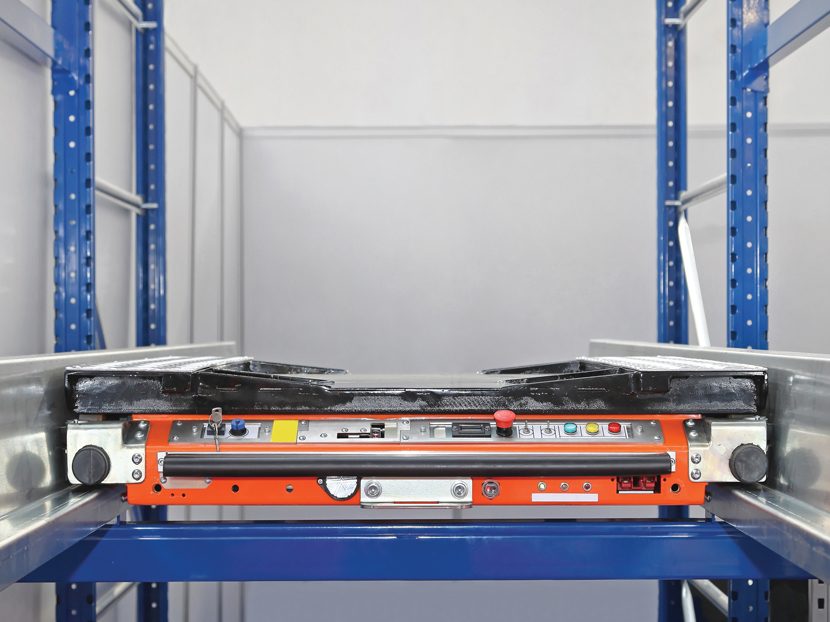Thinking Differently Adds Value, Part 2
What you need to know about goods-to-person order fulfillment.

For decades, most warehouses and distribution centers used a person-to-goods order fulfillment methodology. Essentially, pushing carts around. Many factors are now challenging this particular customer order fulfillment method.
The traditional person-to-goods method of filling orders typically involves sending warehouse associates to different areas or zones of the warehouse to find SKUs. That means a lot of nonvalue-added walking back and forth by each associate, as well as walking multiple aisles between picks.
It was once acceptable for a warehouse associate to spend up to 70 percent of their time walking (up to eight miles per day) and 30 percent of their time picking the order. That’s a fact!
So, every warehouse or distribution center begins to reach a “pain point.” For most, that means a desire to increase throughput without expanding the physical warehouse or increasing labor costs. For others, it may mean increasing the ergonomics. Employees benefit from ergonomically designed picking (reducing reaching and bending), receiving and put-away operations rather than wandering down aisles searching for product or bin locations for product storage.
Newer methodologies, which we encourage, assign associates to one or at least fewer zones to cut down on both foot and equipment traffic. It results in productivity gains but still needs to go further to meet today’s customer-service expectations and warehouse operations productivity goals.
Our view is that order processing and fulfillment systems for wholesale distribution operations depend on a company’s activity profile (data and facts) and overall business operations objectives (service, distribution center/warehouse ergonomic design, optimal use of space (sq. ft. or cube)), as well as “speed-of-flow” objectives (increasing the velocity of product moving through your warehouse).
What Is Goods-to-Person?
Goods-to-person (GTP) order fulfillment means warehouse associates can stay in one area of the warehouse or travel less distance. Product, more often, can move to them.
A GTP solution can incorporate high-density storage systems (such as high-velocity pick zones with conveyor transport), pallet-based or tote/carton-based systems, robotics and vertical lift modules. GTP can remove much of the walking and human intervention (labor requirements) from the process, resulting in error reduction as well as productivity gains.
Whether you pick to a cart, a pallet or a conveyor, whether you batch or zone pick, “pick and pass” or utilize a high-velocity pick zone, this column illustrates the concept of goods-to-person.
Don’t forget about receiving and put-away activities within this context, too. They are just as important to overall productivity.
Whatever the application, goods-to-person is ideal for ergonomic picking and receiving, is more easily scalable and produces a smaller footprint, using less space.
When it comes to GTP and reduced travel time, the larger your facility and operations engine, the greater the benefit. However, for smaller wholesale distributors, goods-to-person is not out of your league, so don’t dispel it.
Metrics and Process Matters
Ultimately, operational metrics provide the backbone for initial data analysis and operational assessment. Strategic business initiatives and longer-term goals provide the detailed roadmap forward. In unison, a balance between performance and return on investment can be achieved.
Process matters! Have a thorough and unbiased assessment and evaluation of all your warehouse operations. Gather all the data you can, including some initial baseline performance metrics, such as orders and lines picked per day. Of course, don’t forget the cost-per-line-picked metric — it’s very telling.
Consider scalability, space capacity and how your business might change in the future — such as service and growth needs, centralizing or decentralizing your network. What will your inventory look like in a few years?
A few years ago, I would have stated that GTP is the future. Let me say today that GTP is now!
Make sure you, as a manager, gain a thorough understanding of how GTP systems could affect your business. What goals do you want to meet over the long term? From our perspective, it doesn’t have to be an either/or situation. Doing something may be a viable strategy.
Don’t cost your business time, money and the chance to stay ahead of the competition.





